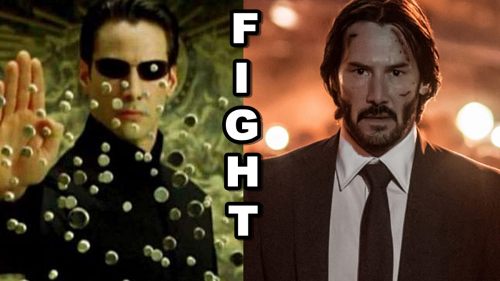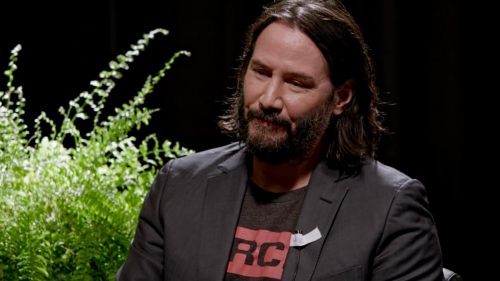A Bus, A Bomb And A Blockbuster: SPEED At 25
It’s impossible to live in modern-day Los Angeles and believe just about anything that happens in Speed. I suppose I should back up and clarify that Jan De Bont’s directorial debut is a masterpiece and every second of it works like parts of a Swiss timepiece - not to mention, “believability” is never high on my list of priorities when it comes to action movies. But in a city that at the beginning of 2019 ranked fifth-worst in the US for traffic, it’s laughable to think that a city bus could even get up to 50 miles per hour anywhere within the vicinity of the freeway, much less maintain it for more than a few seconds.
Again, however, the movie remains perfect, even after 25 years and an annual average of 128 hours for Angelenos stuck in traffic. Narratively, it’s wry, inventive and effortlessly thrilling without ever becoming too cool for its characters to care about the escalating series of challenges they face, and as a consequence, ensuring that audiences care about them. Keanu Reeves was already a commercially viable actor by the time he took the role of Jack Traven, but Sandra Bullock became a star virtually overnight, even as Jeff Daniels, Dennis Hopper and a weighty, eclectic ensemble of supporting players make both the film’s elevator pitch and its interpersonal drama feel equally convincing.
Written by Graham Yost (Broken Arrow) before Paul Attanasio (Quiz Show) and Joss Whedon (The Avengers) significantly punched up the story and dialogue, Speed should fall into the same category as many of that decade’s action movies - forgettable, slickly produced, and derivative of Die Hard without learning any of its most important lessons. Certainly De Bont’s first feature is guilty of that last transgression, but Whedon’s supposed “98.9 percent rewrite of the dialogue” molded Reeves’ character into a more thoughtful, humane character than Yost originally envisioned.
Early scenes feel like they hint at what he might have been: Jack is indefatigable with one-liner reactions to the tense situations he finds himself in alongside Daniels’ older, wearier Harry Temple - exactly as ultracool and dismissive as a dozen heroes from that decade we’ve since forgotten. (It almost feels like parody when he and Harry enter the film in a standard-issue police sedan that enters the frame jumping over the camera.) But once the character gets on the bus, Jack seems to become a different man - thoughtful, compassionate and vulnerable - whose humanity and investment in this unlikely situation makes its twists and turns thrilling and relatable. That said, opposite a seldom-cuter Sandra Bullock as Annie, a “wildcat” full of scrappy, tender energy, Reeves was perhaps helpless not to soften Jack’s rougher edges.
It certainly helps that Yost and his collaborators find some really simple but inventive ways to showcase not only Jack and Annie’s personalities, but those of the rest of the passengers, while incrementally escalating the tension of the premise. The circumstances that land Annie behind the wheel, for example, are both brilliantly calculated and effortless on screen; as are the various ways that the bus is forced into heavier traffic - avoiding pedestrians, etc. - as a measured cat and mouse game unfolds between Jack and Howard Payne (Hopper). But Annie’s responses as the driver - such as her absolute horror after pulverizing a homeless woman’s stroller that she momentarily thinks had a baby in it - make us quickly relate to and fall in love with her as audience members, and then buy readily when she falls in love with Jack by the end of the movie.
Bullock is just so damn good; you want to weep out of sympathy when she falls apart after narrowly escaping from the bus, and repeatedly just admire her streetwise kindness to Jack and everybody else. But then so is Reeves, who you realize turns Jack from a wisecracking cliché of a cop into a true-believer who’s doing good because, well, it’s the right thing to do rather than to be an authority figure or plain old badass.
Yost’s script juxtaposes these wild scenarios - jumping a bus across a 50-foot gap in a freeway overpass being perhaps the silliest - with moments of real substance and consequence, such as when one of the passengers makes a desperate attempt to get off the bus, and loses her life in the process. Those choices don’t feel like glib efforts to build a body count but remind us of the danger, and loss, of what’s at stake for the passengers, much less our heroes. And then the movie pulls the rug out further by reminding us how evilly thoughtful Payne is when he fatally outsmarts Harry. De Bont, levelling up to director after working with the likes of John McTiernan (Die Hard), Ridley Scott (Black Rain), Richard Donner (Lethal Weapon 3) and Paul Verhoeven (Basic Instinct), masterfully balances the thrills and humanity of the script to keep audiences on the edge of their seats and deeply invested in what’s going to happen next.
It’s honestly a real shame that his ability to choose scripts didn’t grow along with his talent. He understands expertly when to use an extreme wide shot (showing the bus on the freeway, navigating through traffic) and when to use a close-up of its wheels; to capture the destruction of a bus explosion directly, and then to reflect it impressionistically in the chrome of a ringing pay phone; and to pay attention to the fear or anguish on his actors’ faces instead of the machinery of special effects or action to convey the gravity of a moment. It’s wild enough that Reeves felt comfortable enough or reportedly insisted upon jumping from a moving Jaguar onto the bus, but De Bont’s low-angle shot that shows clearly Reeves’ face drives home the danger of that moment, and ultimately, the reality of everything that follows.
Of course, nowadays a bus would sit in traffic for hours in LA before finding enough of a pocket to get up a little speed, much less 50 miles per hour, and it would slow down (and blow up) before anyone could even get there to know what had happened. But after the slick “realism” of Die Hard, its obvious predecessor, and before an era where CGI made it possible for filmmakers to do just about anything, Speed epitomizes (and perfectly balances) the pursuit of believability at the expense of plausibility, offering a platonic ideal for action filmmakers to aspire to as they conceive wildly improbable ideas that they hope audiences will cheerfully accept.
De Bont’s film is breathless, self-aware, meticulously paced, and beautifully shot, featuring vivid characters and larger-than-life scenarios thoughtfully examined and satisfyingly resolved. All of which is to say that even if the one element of Speed that is most immediately relevant to me in real life - its depiction of Los Angeles traffic patterns - doesn’t really hold up 25 years later, virtually every other one does, which in a genre often marked by junky detours and maddening dead ends qualifies as the shortest and most direct route to greatness.



